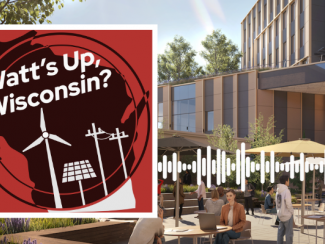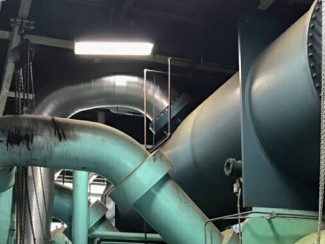The village of Deerfield, 20 miles east of Madison, might look like a lot of small Wisconsin towns.
That is, until you look up.
In this community of around 2,500 people, solar panels are on the high school and the village hall, on a pavilion beside the fire station, and in the field behind the wastewater treatment facility. Half a dozen solar projects have saved the village around $700,000 in electricity costs since 2018, according to funders.
Communities across the state are increasingly considering similar renewable energy projects, especially as grants and federal tax credits have brought down the cost, Deerfield village administrator Maggie Darr said.
But Deerfield’s move toward solar power has been faster than most, thanks to a couple of solar enthusiasts who’ve decided to foot the bill in hopes of setting an example for other rural Wisconsin communities.
Cal and Laurie Couillard have lived on the outskirts of Deerfield since the 1980s. Cal previously owned Componex, an Edgerton-based manufacturing company that makes precision rollers for use in printing presses and other industrial applications. He became a solar power convert in 2017 after he installed enough panels on his factory to supply nearly all its energy.
“I knew that climate change was a big issue, but putting that solar array in at my factory made me realize that the solution was here. It was, financially, a no-brainer,” he said.
When he sold the business to a competitor in 2018, he dedicated himself to helping others switch to solar. He used 60% of the company's stock to fund the Couillard Solar Foundation, which gives grants to help schools and nonprofit organizations add solar panels. To date, the foundation’s Solar on Schools and Solar for Good programs have funded nearly 300 projects across the state.
In Madison, the foundation has funded projects at a VFW Post, the University of Wisconsin-Madison Arboretum, the Dane County Humane Society, St. Vincent de Paul’s Williamson Street complex and Madison College.
But the projects that have transformed Deerfield were funded not by the foundation but by $1.5 million to $2 million in private donations by the couple.
“It made sense for us to do it here, because this is where we live,” said Cal, who runs the foundation from the same building that was once his kids’ elementary school. His kids later attended Deerfield High School, which now has about 1,500 solar panels on its roof.
“This was kind of like a project for my wife and I, so we didn’t want to hurt the foundation by drawing funds away … from what we were doing in the state,” Cal said.
“What we’ve done here in this village is produce about $1 million worth of electricity that was generated from the sun, not from fossil fuels,” he said. “Essentially … we’re trying to show people that if you make this investment, you can position your community much better.”




